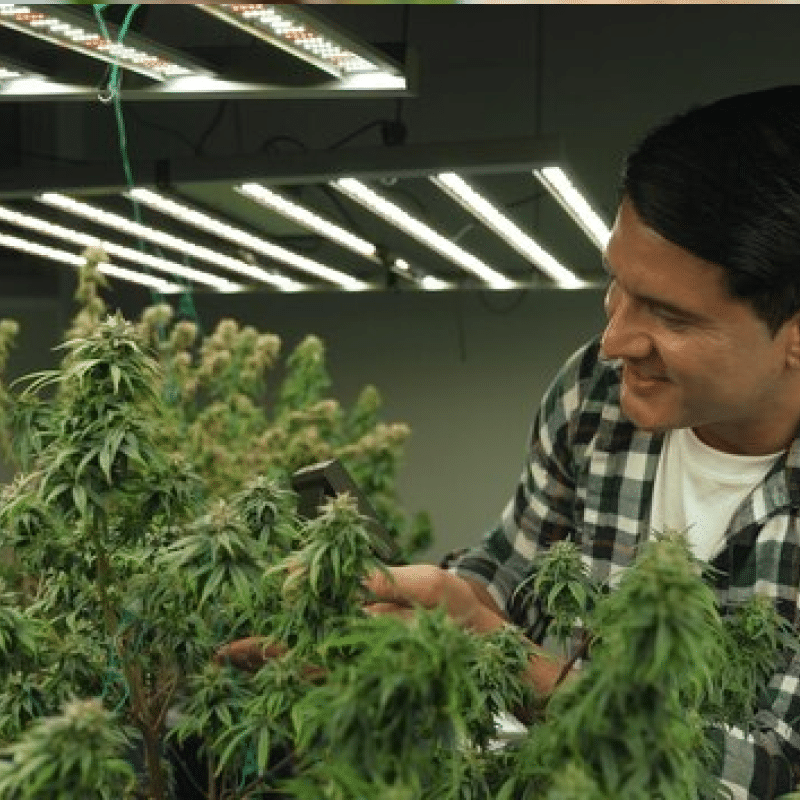Essential Guide to Cannabis Facility Fire Insurance for Growers
Is your cannabis grow operation truly protected from a catastrophic fire? Cultivation facilities face a distinct and often underestimated set of fire hazards, from high-wattage grow lights and overloaded electrical systems to the flammability of dried cannabis biomass and the risks of on-site extraction. With a lack of standardized federal regulations, risk management is critically important. Understanding these unique vulnerabilities is the first step toward securing the proper insurance umbrella—one that goes beyond standard policies to cover plants, equipment, and your financial continuity. Discover the essential coverage your cannabis business needs to withstand the unexpected and safeguard your bottom line.

Talking about fire risk isn’t fun—but it is necessary. Cannabis cultivation facilities face unique fire risks, and it takes a robust risk assessment to create the proper umbrella of insurance coverage to protect facilities, plants, and your financial bottom line. At AlphaRoot, we know the conversation around fire isn’t easy, but our essential guide to cannabis facility fire insurance is here to help.
Understanding the Unique Fire Risks in Cannabis Cultivation
While often overlooked, the processes involved in growing and preparing cannabis introduce a distinct set of fire hazards that demand careful risk management.
Cultivation Equipment
Cultivation equipment requires electricity, from the high-wattage grow lights hanging over your plants to the HVAC and ventilation system keeping the air moving, and the ballasts they run through. Every piece of electrical equipment carries the risk of overheating or short-circuiting, which brings with it the potential for fire. Overloaded extension cords, solar storage batteries, dehumidifiers—there are dozens of places where fire has the potential to start.
Plant-Based Risks
The cannabis plant can also carry fire risk. While plants may not start a fire risk like an extension cord can, they are flammable, particularly after harvest and trim, when the material is drying. Dried cannabis material, waste, and trim are all flammable and can help a fire spread. Additionally, there have been instances of spontaneous combustion of potting soil at grow facilities when stored improperly.
Extraction and Processing
If your cultivation business has other operations on-site, like extraction or processing, these also carry a fire risk and are an important consideration in insurance coverage. Extraction often uses volatile solvents like butane and propane to separate cannabinoids from the plant matter. Both solvents carry a fire and explosion hazard, which must be mitigated with proper handling and storage practices.
Regulatory Environment
Every municipality has its own fire safety regulations, but federal prohibition of cannabis means there are no standardized building codes for cultivation operations to follow, leading to patchwork fire safety regulations.
Types of Insurance for Cannabis Operations
Cannabis businesses, particularly growers, face a unique combination of traditional business risks and industry-specific risks, necessitating a highly customized umbrella of cannabis insurance. This umbrella is different for every cultivator, but includes a few common policies, such as cannabis cultivation.
Cannabis Cultivation Insurance
This specialized policy for cannabis growers provides protection for cannabis plants from seed to sale, an essential safety net for cultivators. Cannabis cultivation insurance mitigates the financial risks for cannabis growers, such as crop failure, pests, or equipment breakdown, so growers can bounce back quickly from crop loss without devastating financial losses. This policy is key to helping cultivation operations manage risk and ensure business continuity.
Build a Comprehensive Insurance Plan
Cultivation insurance is one piece of the puzzle. Other important insurance policies include:
- General liability insurance, also called “slip and fall” insurance, protects your business from third-party claims of bodily injury or property damage while on your premises.
- Product liability insurance provides financial protection against lawsuits arising from claims related to cannabis products, including adverse reactions and improper labels.
- Property insurance is a common policy for businesses with physical locations to cover damage to facilities, equipment, and cannabis plants (when specifically named in the property insurance policy).
- Crop insurance is an important complement to cultivation insurance, providing an additional safety net against financial losses related to crop failure, weather damage, and other natural disasters.
- Workers’ compensation insurance, a mandatory policy in 49 states, provides financial compensation and protection for employees injured on the job.
The Basics of Cannabis Facility Fire Insurance
Cannabis fire insurance is a specialized policy for commercial properties that grow cannabis plants, to cover fire damage to your physical assets. This is just one essential policy for cultivation businesses, but it provides vital coverage for your cannabis plants and facility in the event of a fire.
Key Coverages for Cannabis Cultivators
Other key commercial insurance policies for cannabis businesses include:
- Building/Structure: This policy will cover the cost to repair or rebuild a physical facility after fire, such as an on-site greenhouse or an entire warehouse.
- Business Personal Property (BPP): Facility fire insurance also provides critical protection for the property damage within the affected facility, covering the cost of replacing equipment, such as
- Cultivation equipment (such as lights, irrigation, fans, and benches).
- Product (seeds, plant material, flower, and oil).
- Growing supplies (nutrients, fertilizers, pots, packaging).
- Stock/Inventory Coverage: This policy provides coverage for differing values of cannabis stock at various stages of cultivation. The cost of replacing seeds is different from clones or flowering plants, and that is different from the valuation of finished products. If your policy doesn’t specify coverage at every stage of the growing cycle, your cannabis plants may not be adequately protected.
- Business Interruption/Loss of Income: In the event of a fire, normal business operations cease. This policy also provides financial support to offset lost profits and ongoing expenses while the facility is out of commission or repaired.
- Common Exclusions: Every insurance policy has specific exclusions from coverage you need to be aware of. These typically include fire caused by faulty equipment, intentional acts, or non-compliance with local regulations.
Getting Insurable: Proactive Risk Management for Growers
Getting insurance for cannabis growers can be challenging. Many traditional insurers are wary of the risk that comes with cannabis companies, let alone a grow facility. This puts pressure on growers to demonstrate an unwavering commitment to safety to prove risk management. There are a number of ways that growers can do this, including regular safety and compliance audits, a robust risk management plan, and fire safety measures.
Essential Fire Safety Measures: 5 Actionable Steps
1. Electrical Systems
Grow facilities use massive amounts of electricity, and this is a major fire concern for underwriters. While it should go without saying, don’t cut corners with your electrical setup. Professional, licensed electricians should be the only people to install and maintain all electrical equipment and conduct regular safety inspections.
2. Fire Detection and Suppression
Fire detection and suppression equipment is typically mandated by municipalities, including fire alarms, smoke detectors, CO2 detectors, and sprinkler systems. Having these systems in place and regularly inspected is not just a fire safety best practice, but also a legal necessity. Cultivation facilities can demonstrate a commitment to safety by going above and beyond local regulations, with fire safety signage, thoughtfully placed portable extinguishers, and fire safety training for the team.
3. Site Security and Access Control
Proper security measures are an important piece of fire safety. The more secure a facility is, the less likely it is that an outside actor will cause harm, such as arson. Gated entrances and exits, ID scanners, and limiting personnel on-site are important safety measures to keep traffic limited and lower risk,
4. Regular Employee Training
All employees on-site of the grow facility should be trained in fire safety protocols, including fire suppression equipment use and emergency evacuation plans. This is a piece of a larger risk management plan that cultivates a culture of safety and compliance to address issues before they arise.
5. Proper Storage Practices
Cultivation businesses have unique fire risks with dried biomass of cannabis. Proper storage of the plant while it cures, dries, and is prepared to be sent to manufacturing or packaging is vital for fire safety. Flammable materials and chemicals must be treated with the proper safety precautions as well for storage and use.
How to Secure the Right Policy
Having insurance is good, but general coverage policies don’t cut it in the cannabis industry—you need a customized policy designed by a broker who understands the nuances of this industry. Many policies designed for traditional plant growing spaces don’t cover specific cannabis risks or provide enough coverage for the value of cannabis crops. Working with a specialized cannabis insurance broker ensures your policies are tailored to cannabis insurance needs.
Once you’ve found a broker, you’ll need to prepare documentation for the application. Typical documents needed include:
- Financial statements
- Valuation of assets
- Business plan, including business overview
- Facility schematics
- Fire safety plan, including maintenance logs and load-calc sheets
These documents are vital for the underwriting process, and the more transparent you can be at the start of the process, the faster it will move. Proactive fire safety processes and risk management may also help lower premiums. Additionally, accurate valuation of assets is important to ensure proper coverage of the facility. Pay particular attention to the difference in the actual cash value and the replacement cost, which may vary.
Once all that’s complete and you have the policy in hand, it’s time to review it. Yes, you handed over all your information to ensure it’s accurate, but insurance policies are all about the details. You need to understand your coverage limits, deductibles, and specific exclusions. If you have any questions about your insurance policies, your broker can walk you through it.
Best Practices for Cannabis Businesses
Managing fire risk at a grow facility is an ongoing task, made easier by following a few best practices.
- Comprehensive insurance coverage for fire risk, as well as investing in surety bonds and additional equipment breakdown insurance to protect against other business interruptions.
- Following fire safety protocols, including simple tasks like not overloading outlets or extension cords, fire safety signage, and regular fire safety updates for the entire team.
- Conducting regular financial audits for cannabis insurance to ensure policies are up-to-date and stay on top of financial allocations.
The conversation around fire may not be the most fun, but it is a vital piece of risk management for cannabis cultivation operations. The proper umbrella of insurance coverage protects your company, your team, and your bottom line. Taking the first step towards cannabis insurance is easy with the right partners.
Protecting your cannabis company can seem confusing; however, we’re a full-service insurance brokerage working with carriers worldwide to offer you the best coverage possible. We’re here to help! Please reach out to us today by email [email protected] or calling 646-854-1093 for a customized letter or learning more about your cannabis insurance options.



